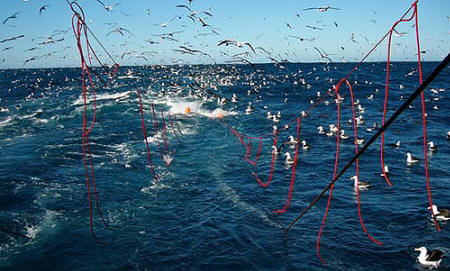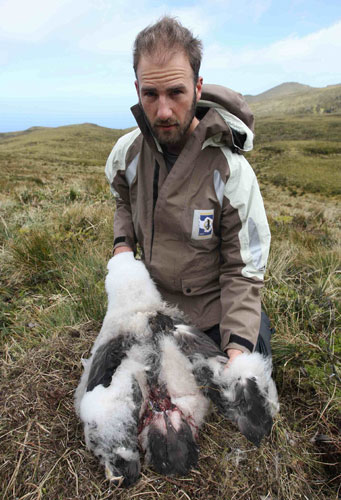Dr. Johannes Holtzhausen of the Ministry of Fisheries & Marine Resources, Namibia gave a presentation on to the conservation of seabirds, including albatrosses and petrels, in his country at the last day of the Eighth Meeting of ACAP’s Advisory Committee in Punta del Este, Uruguay on Friday.
In his presentation Dr Holtzhausen described to delegates the position of Namibia in the south-east Atlantic with a coastline that embraces both warm and cold waters that support important demersal and pelagic fisheries and a rich bird life. Significant populations of seabirds include breeding penguins and cormorants on offshore islands and guano platforms, and visiting non-breeding albatrosses and petrels such as the ACAP-listed Critically Endangered Tristan Albatross Diomedea dabbenena and the Endangered Atlantic Yellow-nosed Albatross Thalassarche chlororhynchos.
The Advisory Committee was informed that Namibia recognized that its fisheries have deleterious effects on its breeding and non-breeding seabirds, both by competing for forage fish and by causing direct mortality on its longliners and trawlers. It fully intended to address this fishery-induced mortality as soon as possible by formally adopting its National Plan of Action - Seabirds, already drafted and finalized, which awaited only the promulgations of the required regulations. In the meantime some Namibian fishing vessels had voluntarily adopted the use of mitigation measures, such as the deployment of bird-scaring lines (click here).

Twin bird-scaring lines deployed behind a southern African hake trawler
Photograph by Barry Watkins
Dr Holtzhausen concluded that Namibia wished to move from being a nation with a poor record of killing up to an estimated 30 000 albatrosses and petrels a year in its fisheries to one that could serve as a best-practice example to others.
In another development the Advisory Committee agreed its Chair will send a letter to the United Kingdom’s Secretary of State for Environment, Food and Rural Affairs stating that the committee considers the removal of introduced House Mice Mus musculus from the UK’s Gough Island as a particularly high priority in order to help conserve Tristan Albatrosses, as well as other ACAP-listed seabirds on the island, and wishes those involved every success in an eradication exercise.

This Tristan Albatross chick attacked by mice on Gough Island died soon after
Photograph by Peter Ryan
AC8 ended its deliberations by warmly thanking Uruguay for hosting the Agreement’s meetings over the last two weeks.
John Cooper, ACAP Information Officer, 21 September 2014

 English
English  Français
Français  Español
Español